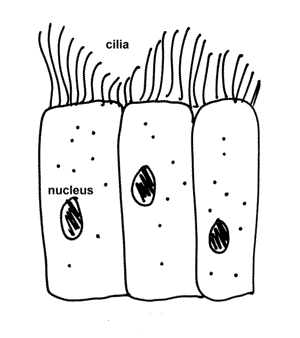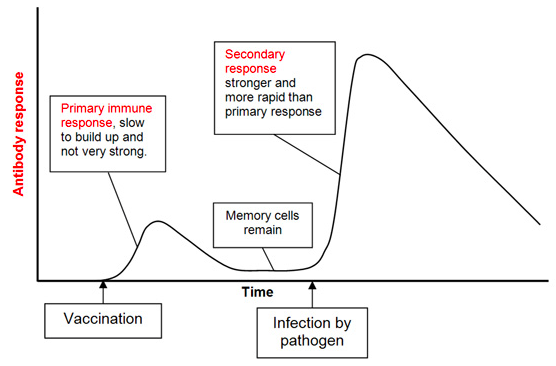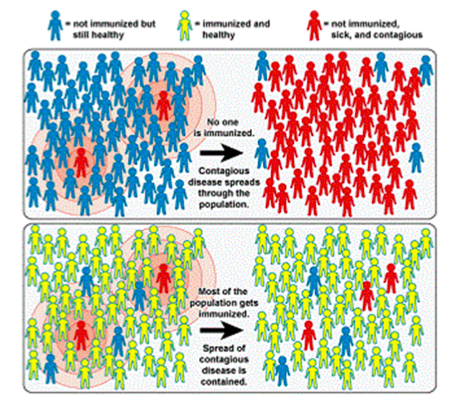Defence Systems
Non Specific Defence Systems
Humans have physical barriers and chemical defences in order to protect them from pathogens. They are non-specific defence systems- meaning that they will fight any type of pathogen that it comes across.
Physical Barriers
- Mucus - produced by cells in the nose. The mucus will trap pathogens before it can go down the trachea, and into our lungs. If there is any remaining mucus with the trapped pathogen, it will be broken down by the acid in the stomach.
- Cilia - hair cells that are lined in the trachea. They will move the mucus and pathogen upwards so that it can be coughed out
- Skin - the biggest organ in the body that protects us from infections. If we get a cut, it tends to heal itself through time as the blood will clot to prevent further blood loss
Chemical Defences
- Lysozymes - an enzyme that is found in tears. It is used to protect the eye from any bacteria
- Hydrochloric acid - found in the stomach. It makes it an acidic environment, which would allow a lot of pathogens to get killed.
Immune Systems
The immune system is the body’s second line of defence, where it tackles the pathogens that has gone past the first line of defence (the physical and chemical defences listed above). The body’s white blood cells will be triggered. There are two types of white blood cells: lymphocytes and phagocytes.
When exposed to pathogens, the antigens trigger an immune response which causes the production of antibodies. The antigens also trigger production of memory lymphocytes. Memory lymphocytes will have remembered how to fight this pathogen, therefore it will work quickly to destroy the pathogen.
Phagocytes are attracted to pathogens, and it will bind to the pathogen. The phagocyte will then surround the pathogen in the blood, and then it would engulf the pathogen. The enzymes inside the cell will destroy the pathogen. This process is called Phagocytosis.
Sometimes, pathogens will produce toxins. Lymphocytes will produce antitoxins that will neutralise the toxins.
Vaccinations
People can be immunised against a pathogen through the use of vaccinations. Different vaccines are needed for different types of pathogens. Sometimes booster vaccinations are required.
Vaccination involves putting a small amount of an inactive or weakened form of a pathogen into the body. Vaccines can contain dead pathogens, or live pathogens treated to make them harmless, or harmless fragments of the pathogen, or toxins produced by pathogens.
These all act as antigens. When injected into the body, they stimulate white blood cells to produce antibodies so that it can fight and destroy the pathogen.
Because the vaccine contains only a weakened or harmless version of a pathogen, the vaccinated person will have a much lower chance of being affected by the pathogen. Lymphocytes are ready to destroy the pathogen if it returns.
Immunisations
| Advantages to immunisation | Disadvantages to immunisation |
|
|
Herd Immunity: When a high percentage of the population is vaccinated, it is difficult for infectious diseases that are also contagious to spread.
- How does mucus act as a defence barrier?
- Your answer should include: Mocus / Trap / Pathogens / Trachea / Lungs
Explanation: The mucus will trap pathogens before it can go down the trachea, and into our lungs. - What is herd immunity?
- Your answer should include: High / Percentage / Population / Vaccinated / Infected / Disease / Difficult / Spread
Explanation: When a high percentage of the population is vaccinated, and less people get infected by the disease as it is difficult for infectious diseases to spread. - What do vaccines contain?
- Your answer should include: Dead / Live / Pathogens / Harmless / Fragments / Toxins
Explanation: Vaccines can contain dead pathogens, or live pathogens treated to make them harmless, or harmless fragments of the pathogen, or toxins produced by pathogens.


